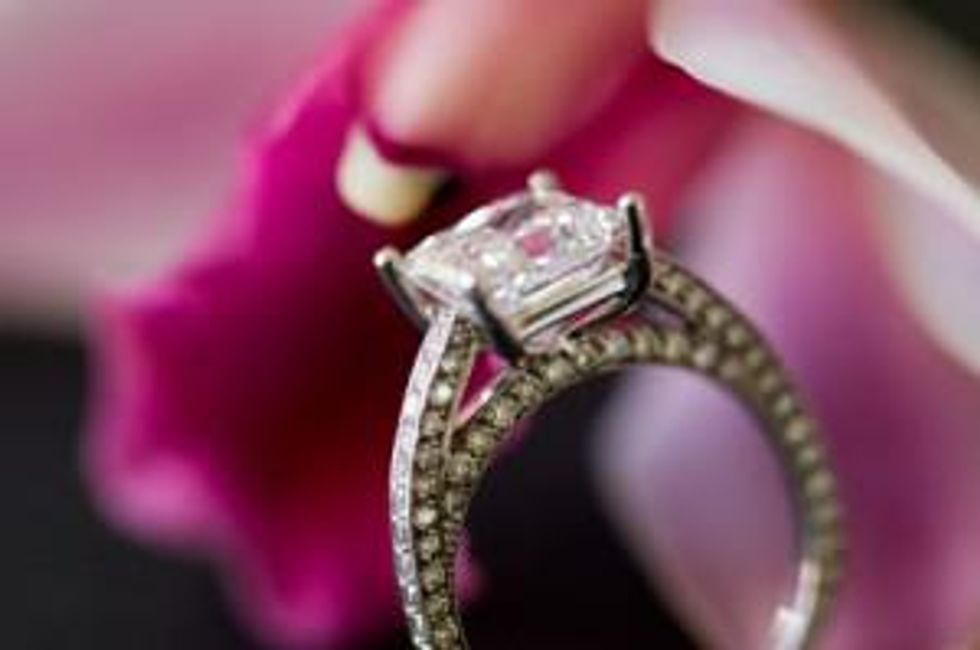China and India Emerging as Drivers of Diamond Demand
In China and India, increasingly wealthy consumers who are adopting the western tradition of giving diamond jewelry to celebrate engagements and weddings are beginning to drive demand in the diamond market.
In the western world, diamonds have been intimately linked to weddings and engagements since De Beers famously coined the slogan “a diamond is forever” in 1947. To the dismay of those watching their wallets, that has also meant that the coveted gems enjoy a close association with February’s unofficial holiday: Valentine’s Day. Now, increasingly wealthy consumers in eastern markets, specifically China and India, are emerging as major drivers of diamond demand as they adopt the tradition of marking these occasions with diamond jewelry.
Wealthy Chinese and Indian consumers to drive demand
The 2012-2013 Executive Summary from Rare Investment, a company that focuses on exposing clients to fancy-colored diamonds and other rare jewel investments, notes that in the coming years, China and India will drive demand for all types of diamonds, from low to high end.
In China, demand will largely be the result of the country’s growing number of billionaires. The report quotes investment bank Credit Suisse (NYSE:CS) as stating that “[t]he number of billionaires in Asia rose to 351 last year from 245 in 2010” — that’s compared to 332 in North America and just 251 in Europe. And that increase in billionaires has been accompanied by a “trickle-down effect in wealth across the country,” meaning that as a whole the Asian nation is primed to consume high-end luxury products like diamonds.
Rare Investment’s report also notes that “India, alongside China, has been identified as the fastest growing market in the world for luxury jewelry over the next five years.” In fact, Indian consumers’ desire for diamonds may eventually outpace their demand for gold. That’s a considerable feat considering the fact that India is widely known as a gold-hungry country.
Westernization also a factor
But it’s not just billionaires who are contributing to the increase in diamond demand in China and India. Consumers picking up the western custom of marking occasions — primarily weddings and engagements — with diamond jewelry are also adding to demand and are expected to continue doing so. Rare Investment’s report notes that there is already a precedent for this type of shift. In 1940, only 10 percent of brides in the United States received a diamond engagement ring, but by 1990 the amount had hit 80 percent; similarly, “in Japan, brides receiving diamond went from 6% to 80% over a period of 30 years.”
By the numbers
An article published last week by Forbes states that in 2011, retail diamond sales were 18 percent higher than they were in 2010; 2012 figures, when announced, are expected to show further gains. China and India are both contributing to such sales increases: with yearly sales of more than $9 billion, China is currently the second-largest diamond market in the world, while India’s annual sales of the gem sit at $8.5 billion. Both countries buy more diamond jewelry than Japan, the European Union and the Persian Gulf area. By comparison, in the United States, diamond sales amount to $27 billion per year; however, consumers there are starting to favor “cheaper jewelry and smaller stones.”
Which companies will succeed?
The Forbes article corroborates Rare Investment’s outlook, citing both growing wealth in China and India and the countries’ increasing adoption of the western custom of marking auspicious occasions with diamond jewelry as factors that are influencing growing demand for diamonds in the east. It goes on to note that those interested in taking advantage of this demand would do best to keep in mind what Asian consumers are looking for.
That means offering diamonds at prices that the growing middle class can afford and taking into account the fact that “Chinese shoppers, for instance, have tended to buy diamonds in department stores because of the variety offered and the assurance of reputable, high-quality goods.”
Diamond Investing News reported last year that some diamond companies, notably De Beers, are using branding — the technique of “creating a unique identity or story” — to thrive when the market is no longer booming. That strategy is equally applicable in the emerging Chinese and Indian markets; while of course product quality is important, the ability to market that product in ways that address what specific consumer groups want — and can afford — will be a definite advantage moving forward.
Securities Disclosure: I, Charlotte McLeod, hold no direct investment interest in any company mentioned in this article.
Related reading:
